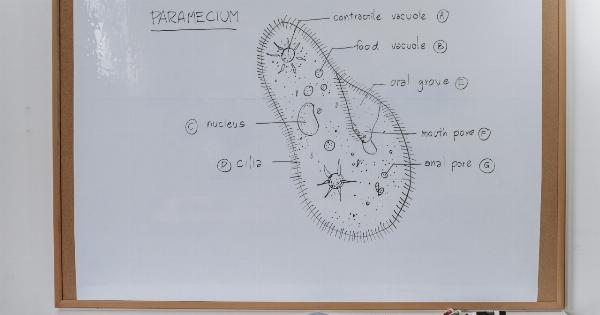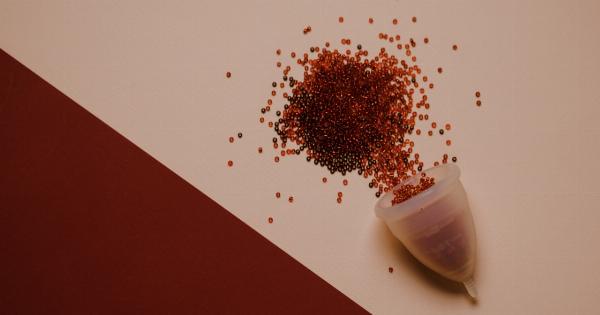Cervical polyps are growths that occur on the cervix, which is the lower part of the uterus that connects to the vagina. These polyps are usually noncancerous (benign) and are typically small in size.
However, they can cause discomfort and may lead to certain symptoms. It is important to understand the causes, symptoms, and diagnosis of cervical polyps in order to seek proper treatment and ensure overall vaginal health.
Causes of Cervical Polyps
Though the exact cause of cervical polyps is not fully understood, several factors may contribute to their development. Some of the common causes include:.
- Hormonal imbalances: Fluctuations in hormone levels, particularly estrogen, may lead to the formation of cervical polyps.
- Chronic inflammation: Infections or continuous irritation in the cervix can result in the growth of polyps.
- Increased blood flow to the cervix: High levels of blood flow to the cervical area may promote polyp growth.
- Chronic cervicitis: Long-term inflammation of the cervix can increase the likelihood of developing cervical polyps.
- Previous vaginal or cervical infections: Certain infections, such as human papillomavirus (HPV), can be associated with cervical polyps.
Common Symptoms
The presence of cervical polyps may cause various symptoms, although some individuals may not experience any symptoms at all. The most frequent symptoms associated with cervical polyps include:.
- Abnormal vaginal bleeding: This can include post-coital bleeding (bleeding after sexual intercourse), bleeding between menstrual periods, or unusually heavy or prolonged periods.
- Unusual vaginal discharge: Cervical polyps can cause a white or yellow mucus-like discharge.
- Pain during intercourse: Polyps can lead to discomfort or pain during sexual activity.
- Frequent urination: Large polyps can put pressure on the bladder, resulting in increased frequency and urgency to urinate.
If you experience any of these symptoms, it is crucial to visit a healthcare provider for a proper diagnosis and treatment plan.
Diagnosing Cervical Polyps
To diagnose cervical polyps, your healthcare provider will perform a thorough examination, which may include:.
- Pelvic examination: Your healthcare provider will use a speculum to examine your cervix and vagina, checking for any visible polyps.
- Colposcopy: In some cases, a colposcope (a special magnifying instrument) may be used to obtain a closer look at the cervix and identify any abnormalities.
- Biopsy: If a polyp is discovered, your healthcare provider may recommend a biopsy to rule out the presence of cancer cells or to confirm the diagnosis.
- Ultrasound: In certain situations, an ultrasound may be performed to determine the size and location of the polyps.
- Hysteroscopy: This procedure involves inserting a thin, lighted tube with a camera into the uterus to examine the cervical canal and uterine cavity.
The above diagnostic methods will help your healthcare provider determine the presence of cervical polyps and formulate an appropriate treatment plan.
Treatment Options
The treatment of cervical polyps primarily involves their removal, especially if they are causing symptoms or if there is concern about their potential to develop into cancer. The common treatment options include:.
- Polypectomy: This procedure involves the surgical removal of the polyps. It can often be performed in the healthcare provider’s office, using local anesthesia.
- Cryosurgery: Freezing the polyps with extreme cold can be an effective method of removal.
- Electrocautery: The use of electric current to burn or vaporize the polyps is another approach to their removal.
- Medication: In some cases, hormonal medications may be prescribed to help shrink or control the growth of cervical polyps.
After the removal of cervical polyps, they are typically sent to a laboratory for further analysis to ensure there are no cancerous cells present.
Prevention and Outlook
Since the exact cause of cervical polyps is not fully understood, there is no surefire way to prevent their occurrence. However, taking steps to maintain good vaginal health may help reduce the risk. Some preventive measures include:.
- Practicing safe sex: Using condoms during sexual intercourse can lower the risk of certain infections that may lead to cervical polyps.
- Maintaining good hygiene: Ensuring proper cleanliness of the genital area may help reduce the risk of infections and inflammation.
- Scheduling regular check-ups: Routine gynecological examinations and Pap smears can aid in early detection and timely management of cervical polyps.
- Quitting smoking: Smoking has been associated with an increased risk of cervical polyps, so quitting smoking may be beneficial in prevention.
The outlook for individuals with cervical polyps is generally positive. Once the polyps are removed, symptoms typically resolve, and there is a low likelihood of recurrence.
However, regular monitoring and follow-up appointments are important to detect any potential problems early.



























